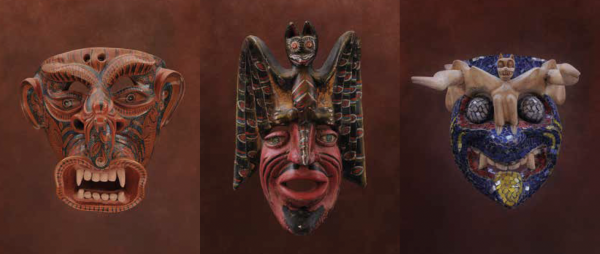Masks for Religious Celebrations and Festivals
After the Spanish Conquest, many friars and priests encouraged the indigenous populations to incorporate elements of the Catholic faith into their masks, dances, and rituals as a means of hastening their conversion to Christianity. One of the strategies employed by the priests was to assign a Christian saint to be the patron of every town and village. Carved statues were installed in the churches dedicated to them. On the saint’s feast day, “plays/dances” were held to celebrate their lives, accomplishments, or history, with costumed and masked individuals playing different roles. Other festivals in which masks were used included Carnival, Christmas, Holy Week, the Day of the Dead, and events surrounding the Spanish Conquest. Although these stories were brought by the Spaniards, the local communities transformed them, often interweaving longstanding indigenous elements and characters into the celebrations. Syncretism of native and Catholic beliefs became common in the dances and masks, with continuing evolution of these into new forms over time.
Carnival Dances from Tlaxcala
Carnival (Carnaval) is celebrated in many towns and cities across Mexico but the celebrations in the Nahua indigenous area of the state of Tlaxcala are especially fantastical with outlandish costumes and stunning masks. Different communities have their own distinct performances. One recurring theme, however, is that several of the dances show how the local indigenous populations rebelled against, or satirized, the ruling class. The masked “dandies” in fine clothes twirling parasols poke fun at the people who exploited the poor during the colonial period.
Video Resource: Carnival of Tlaxcala, Mexico - YouTube
Much of the art of Desiderio Hernández Xochitiotzin focused on the local customs, life, landscapes, and religion of his home state of Tlaxcala. Born in San Bernardino Contla in 1922, he passed away in the city of Tlaxcala in 2007. He is best known for the murals he painted in the State Government Palace in the state of Tlaxcala, works that many consider to be the last large-scale murals of the Mexican muralism movement. Paintings and engravings of the masked figures participating in the local dances and festivals are among his finest works. His masterful painting El Regreso shows the strong linkage between masks and images of death that are present in many celebrations in Mexico.
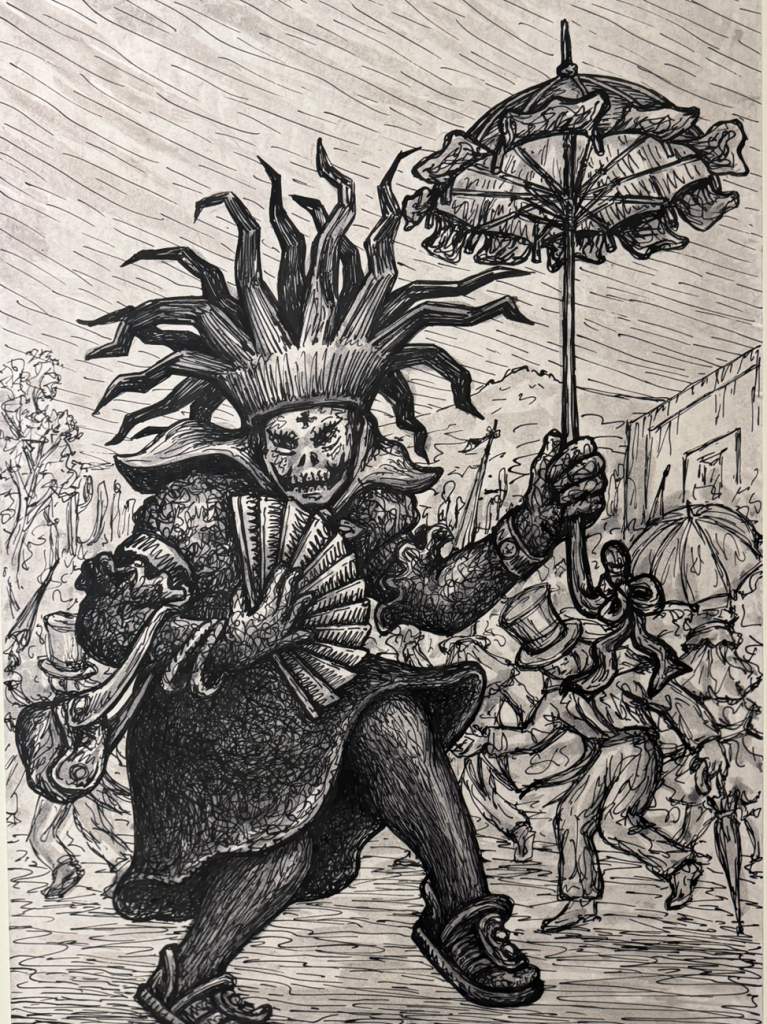 |
A Devlish Dandy (catrin) Artist: Desiderio H. Xochitiotzin Tlaxcala, Tlaxcala Ink on paper 1952 Loan from Jean Nutini |
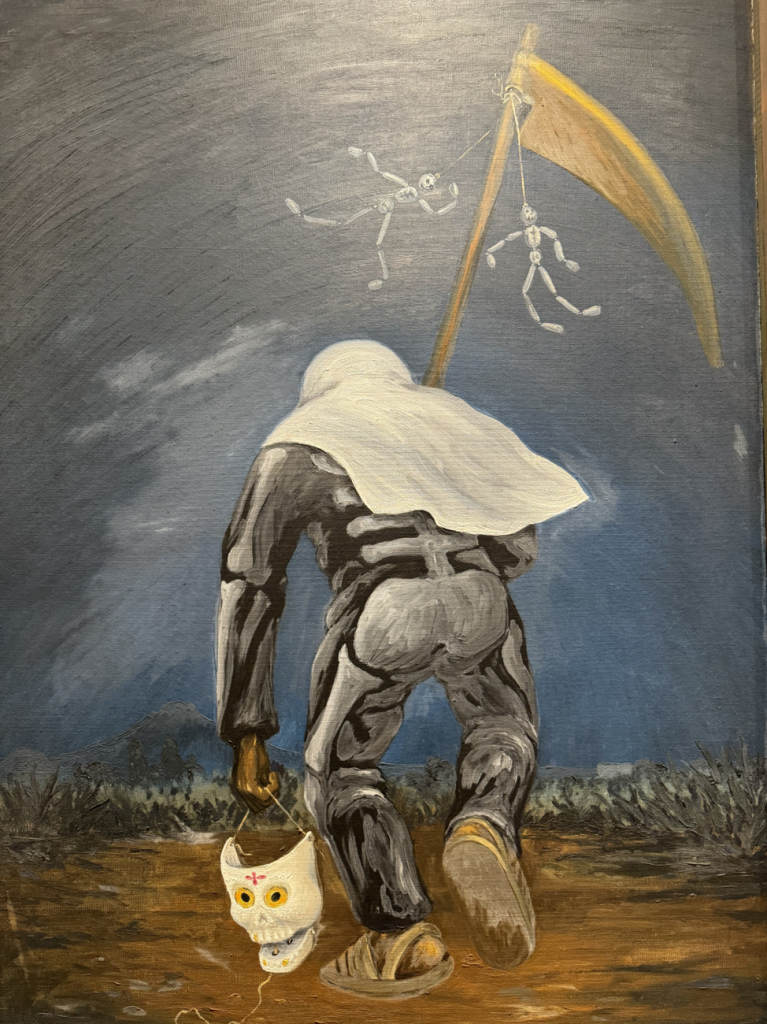 |
The Return (El Regreso) Artist: Desiderio H. Xochitiotzin Tlaxcala, Tlaxcala Oil on Canvas 1972 Loan from Jean Nutin |
Artist Resource: Desiderio Hernández Xochitiotzin - Wikipedia
The Festival of Saint James, Tonalá, Jalisco
Although the Festival of Saint James (Santiago) is celebrated in several parts of Mexico, the largest and most famous celebration occurs each year on July 25 in the city of Tonalá, Jalisco. Saint James is the patron of the city and there the festival is known as the Tastoanes dance. The festival uses Saint James to represent the triumph of Spain and Christianity in Mexico. The event relates the story of the suffering of the indigenous people and their courage in combating the conquerors. The dance is a mock battle that begins with Saint James using a whip against the Tastoanes who represent the native people. Although he is captured and killed, eventually he is revived and triumphs over the Tastoanes, symbolizing the success of the Spanish.
Video Resource: The Tastoanes of Tonalá, Mexico - YouTube
The masks worn by the Tastoanes protect the participants from the whip of Saint James. The tusks and teeth that decorate the masks represent the ferocity and courage of the Tastoanes. Painted spots and insects on the masks symbolize the smallpox and plagues introduced by the Spanish, which played such an important role in severely reducing the population and helping to subjugate the native people.
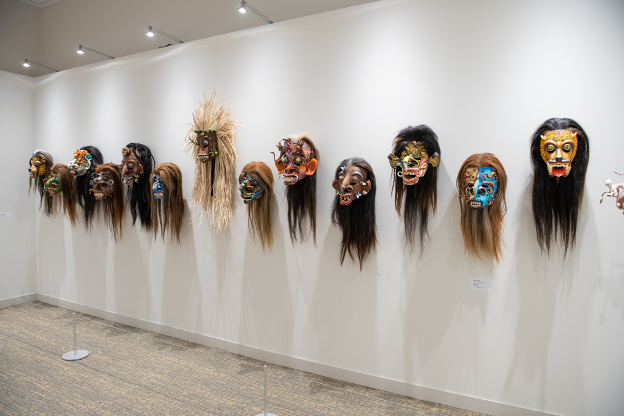 Tastoanes Masks Tastoanes MasksArtist: N. Locano Tonalá, Jalisco Leather, horsehair, cornstarch paste 21st Century Loan from Robert Gaston |
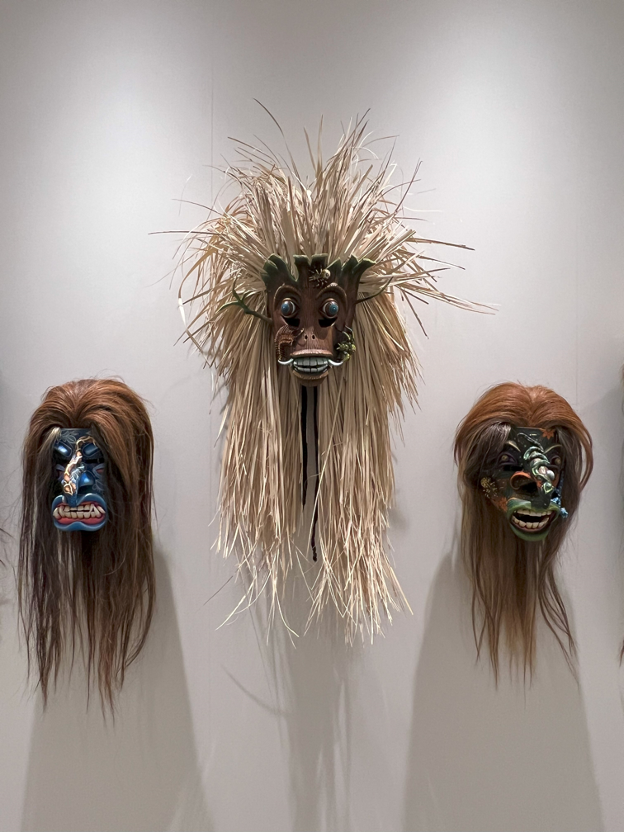 Tastoanes Masks Tastoanes MasksArtist: N. Locano Tonalá, Jalisco Leather, horsehair, cornstarch paste 21st Century Loan from Robert Gaston |
 Photo by Alejandro Basan Photo by Alejandro Basan |
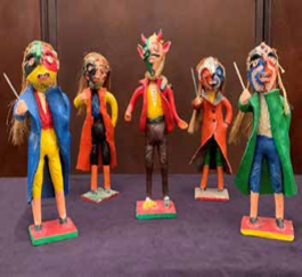 Antique Tastoanes Figures Antique Tastoanes FiguresArtist: Ortega Workshop Tonalá, Jalisco Ceramic, paint 20th Century Loan from Robert Gaston |
The Masks that Eat: Carnival of Cruz Blanca, Veracruz
Among the Otomi of the town of Cruz Blanca, Veracruz, Carnival is a "game" (nteni), during which the devil and his children appear in the human world to receive food and drink. Although Carnival marks the beginning of the Lenten season (Cuaresma), in the indigenous world of Cruz Blanca this is a time when people celebrate the feast of the underworld and its rulers who are responsible for agricultural fertility and the welfare of the community. The Otomi devil (called Zithū, "the devourer of names" or "one whose name is not spoken") is considered “master of the world.” He is personified as a straw doll dressed in a suit, tie, shoes, hat, dark glasses and with a non-indigenous face. The devil is also represented in the form of ancient masks that are protected by the town. In the celebrations or “game,” these devils are accompanied by multiple masked children who dye their bodies with red or black paint and fill the town with noises, shouts, and growls. The game includes music and dancing, during which people make many requests of the devil accompanied by offerings of cigars, candles, drink, raw pork, or the blood of birds. Food is stuffed into the ancient masks to feed them. In return, the devils of the underworld provide health, protection, life, and prosperity to humans.
Video Resource: The Masks that Eat: Carnival of Cruz Blanca, Veracruz - YouTube
After three days, the straw doll devil is carried through the town to be deposited in a small chapel at the entrance of the community. There he will help control what enters and leaves the town, preventing the arrival of diseases, violence, and other misfortune. At the close of the “game,” the sacred masks are stored again, and the people can rest easy, knowing that they have fulfilled the task of feeding the owner of the seeds, the bodies, the world, and the souls. Because these masks are sacred and stored for use year after year, no examples of them are available for exhibition.
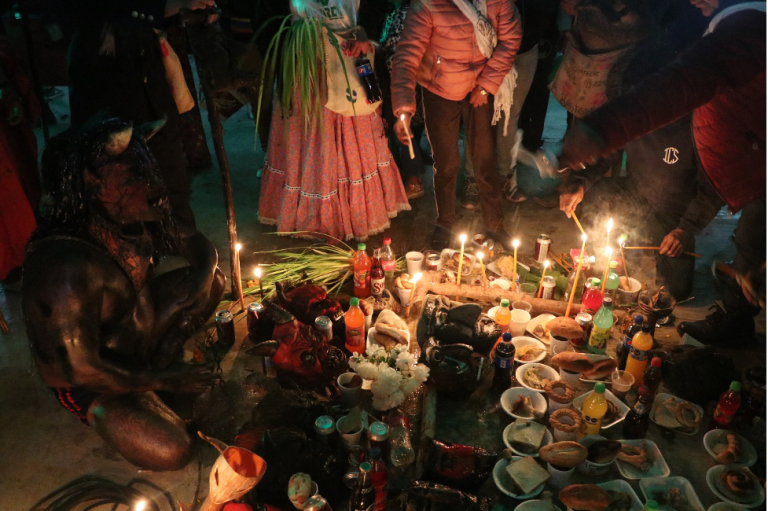 |
The Masks That Eat Carnival of Cruz Blanca, Ixhuatlán de Madero, Veracruz Photo by Carlos Arturo Hernández Dávila 2023 |
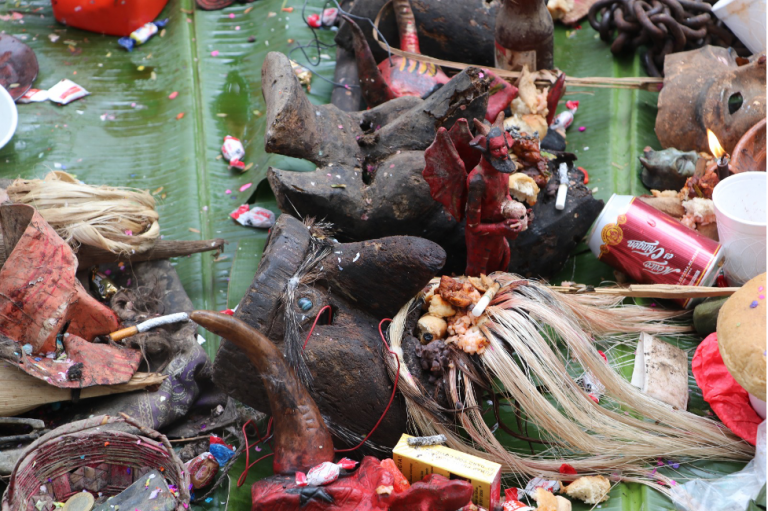 |
Providing the Masks with Food, Cigarettes, and Soda Carnival of Cruz Blanca, Ixhuatlán de Madero, Veracruz Photo by Carlos Arturo Hernández Dávila 2023 |
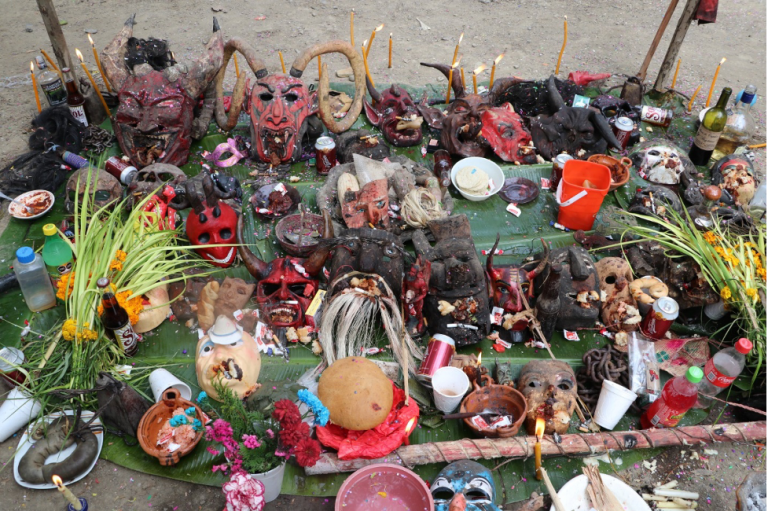 |
The Array of Masks That Are Fed Carnival of Cruz Blanca, Ixhuatlán de Madero, Veracruz Photo by Carlos Arturo Hernández Dávila 2023 |
Tecuanes (Jaguars) Dances and Festivals, Guerrero and Puebla
Masks and dances that revolve around Tecuanes (jaguars that devour men) are used in a variety of celebrations in many indigenous communities in the states of Puebla and Guerrero. These festivals reflect the religious syncretism of Catholic beliefs with indigenous gods and fertility rituals. One of these occurs during the Feast of the Holy Cross on May 3, a time that coincides with the beginning of the agricultural cycle, when the people petition the rain god Tlaloc for good rains to grow their crops of maize and beans. The highlight of this festival is when people wearing jaguar masks and wielding rope whips engage in fights. The whips are associated with the tail of the jaguars and the sound of the whips is like claps of thunder. The belief is that every drop of blood shed will bring that amount of rain to the community. Masks not only represent the jaguar but serve the important functions of protecting the faces and heads of the combatants.
Video Resource: Inside the world of Mexican tiger fighting: a brutal indigenous rain ritual - video Dailymotion
Other Tecuanes dances revolve around the legend of villagers plagued by a jaguar that was killing their livestock. The jaguar survived every attempt to kill it but, in the dance, people disguise themselves as trees, stones, and animals. The dancer who portrays the Tecuán begins killing animals with his whip and jumps into the audience to scare unsuspecting people. Eventually the villagers unite to pursue the beast, surround it, and collaborate in killing it. Because of its colorful imagery and story, this version of the Tecuanes dance has been incorporated into many popular shows that feature the folkloric dances of Mexico. It is also often performed in US cities and towns that have large Mexican-American populations.
Video Resource: Danza de los Tecuanes de Acatlán de Osorio en el Festival Huey Atlixcáyotl 2022 - YouTube
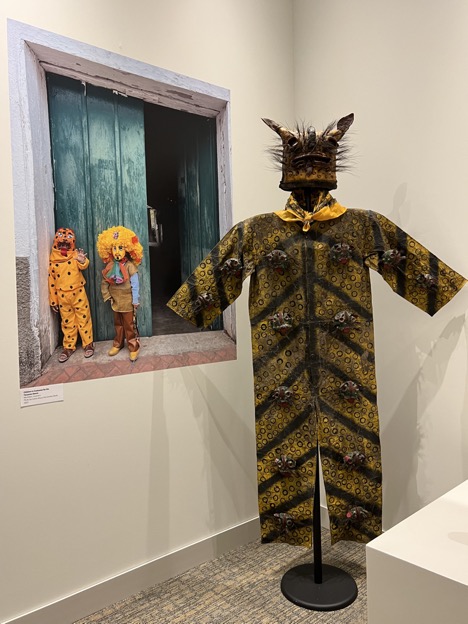 Tecuanes Mask and Suit Tecuanes Mask and SuitArtist: Unknown Zitlala, Guerrero Wood, leather, fabric, hog bristle, mirrors Mid-20th Century Loan from Robert Gaston |
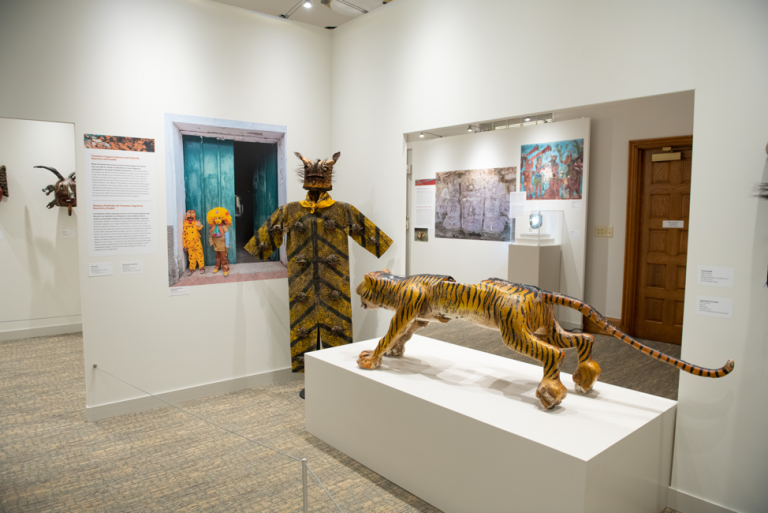 A View of the Gallery with Tecuanes Costume and Jaguar Body Mask A View of the Gallery with Tecuanes Costume and Jaguar Body Mask |
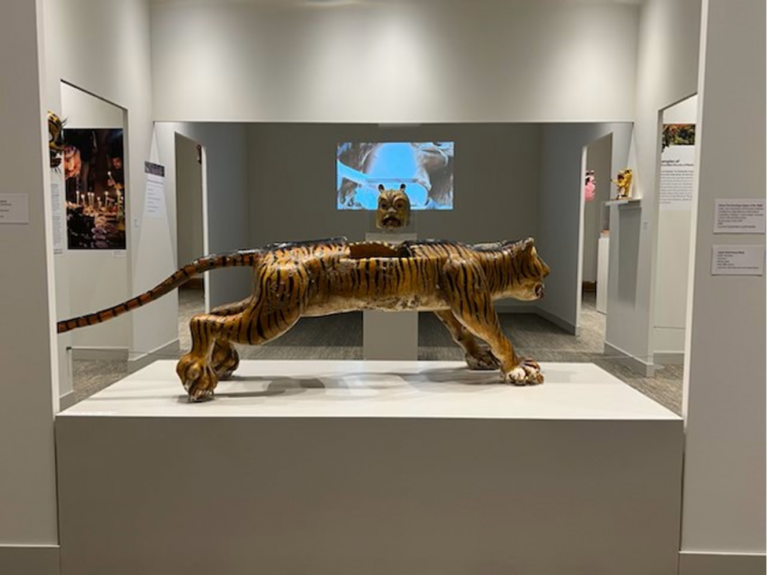 Jaguar Body Dance Mask Jaguar Body Dance MaskArtist: Unknown Guerrero Wood, paint Early 20th century Loan from Joel Aaronson and Claire Keyes |
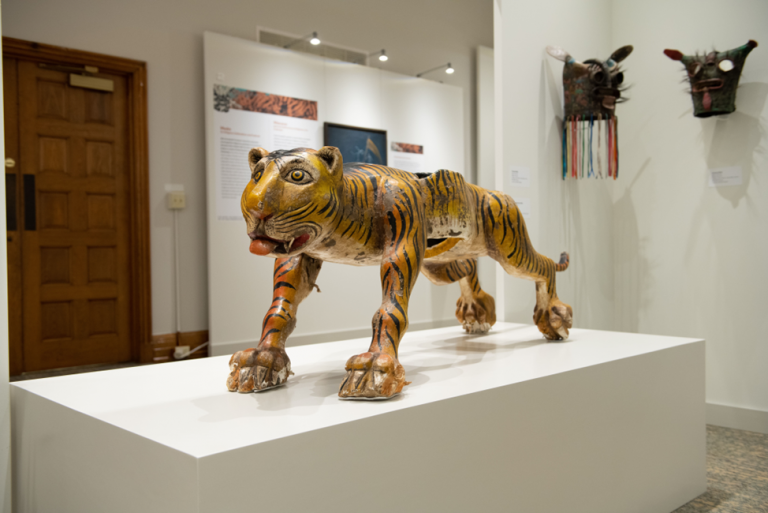 Jaguar Body Dance Mask Jaguar Body Dance MaskArtist: Unknown Guerrero Wood, paint Early 20th century Loan from Joel Aaronson and Claire Keyes |
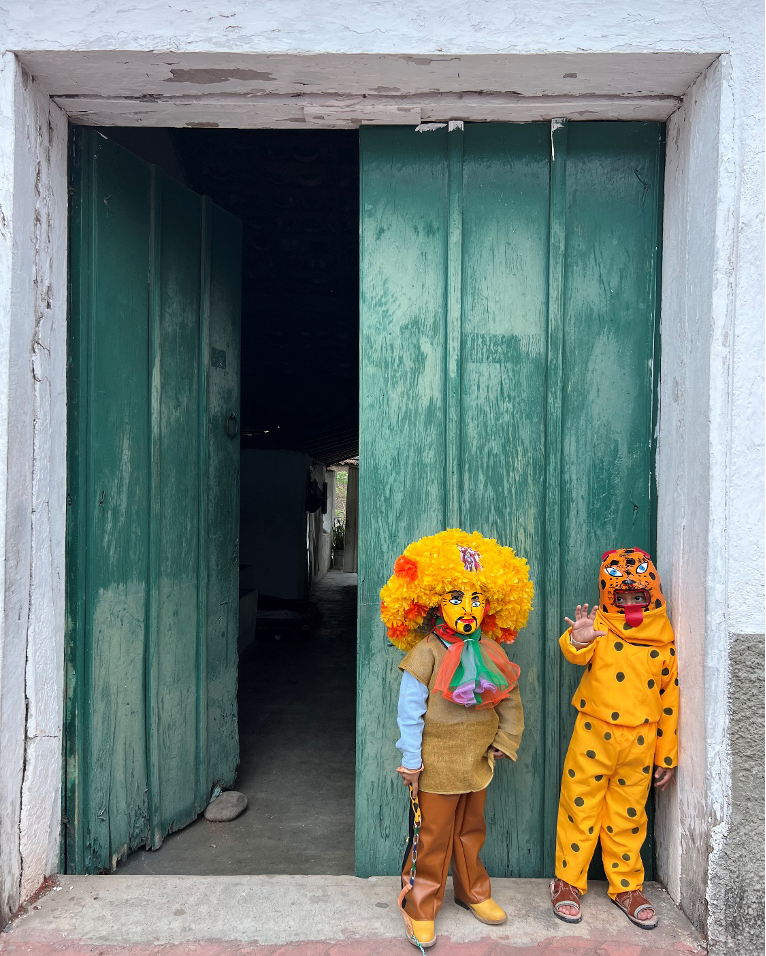 Children in Costumes for the Tecuanes Dance Children in Costumes for the Tecuanes DanceMochitlán, Guerrero Photo by Carlos Arturo Hernández Dávila 2023 |
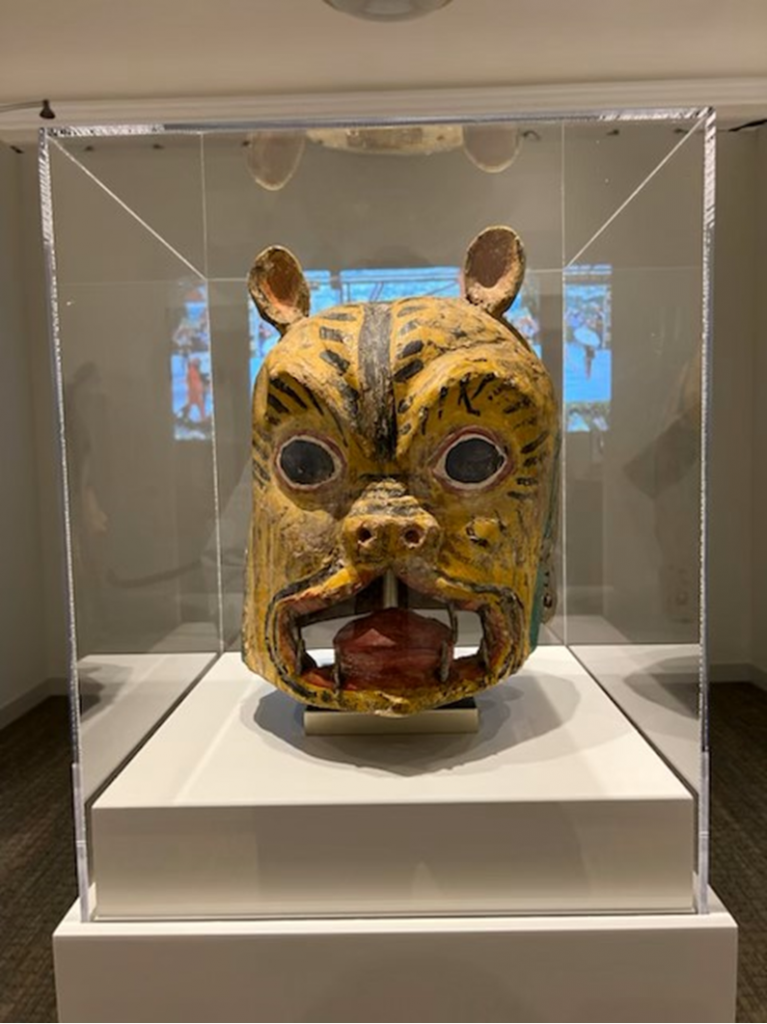 Two-faced Helmet Two-faced HelmetArtist: Unknown Guerrero Wood, paint Early 20th century Gift from Hugo to Jean Pierre Nutini Loan from Lisa DiGioia-Nutini |
Xantolo: Day Of The Dead Celebration in San Luis Potosi
Some parts of the state of San Luis Potosi have indigenous populations of Tenek and Nahuatl people who celebrate the Day of the Dead, known locally as Xantolo (probably derived from the Latin sanctorum, referring to people who have passed away). In the community of Tampamalón, for example, this is when people connect with their departed ancestors. Altars adorned with marigolds and cockscombs are erected in houses and cemeteries. In addition, the celebrations include masked dances called comparsas. Representing different aspects of life and death, among the masked figures are devils, clowns, pregnant women, prostitutes, skeletons, soldiers, policemen, schoolgirls, old people, and many more. These masked figures parade through the streets and dance as a group in the central plaza of the town.


